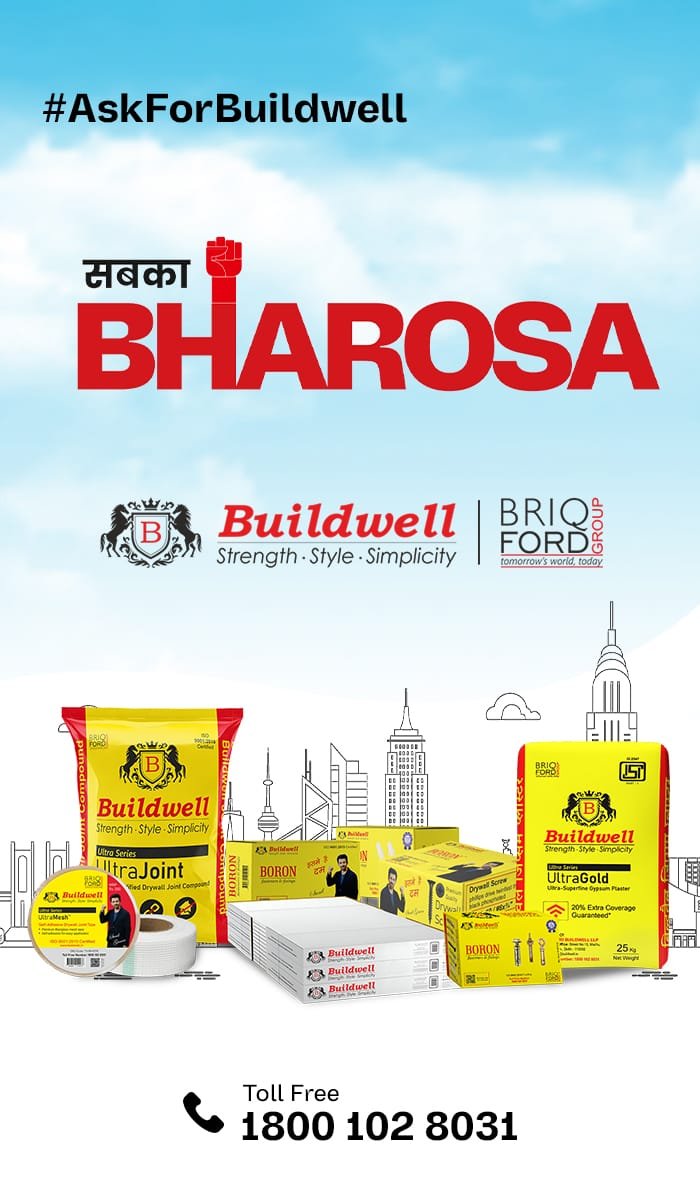When Should You Use Gypsum Plaster Instead of Local Plaster?
The choice between gypsum plaster and traditional (local) cement-sand plaster is one that most builders, contractors, and homeowners in India encounter at some point. On one side is familiarity — local plaster has been around for generations. On the other is modern performance — gypsum plaster, especially from trusted names like Buildwell, is redefining how Indian interiors are finished.
So when should you leave the old method behind and go with something new?
Let’s decode this by exploring real site situations where switching to gypsum makes not only sense — but a stronger, smoother, smarter decision. And why so many professionals are now turning to Buildwell, widely regarded as the Best Gypsum Plaster Brand in India.
Not Every Plaster Is Created Equal
To begin, let’s understand the basic difference.
Local plaster — a mix of cement, sand, and water — is applied in multiple layers, usually over 20mm thick. It requires curing, takes time to dry, and needs expert handling to avoid cracks.
Gypsum plaster, on the other hand, is a factory-prepared, ready-to-use material that:
- Needs no curing
- Dries quickly
- Can be applied in one coat (usually 12mm)
- Offers a much smoother and finer surface
But these differences go beyond convenience — they affect the project timeline, quality of finish, structural load, and even long-term maintenance.
1. When You’re Working on Ceilings
Let’s be honest — traditional plaster is not ceiling-friendly.
It’s too heavy. It requires layers. And it doesn’t hold well unless wire mesh is installed first, which adds both time and cost.
This is where gypsum plaster is unbeatable. It’s:
- Lightweight
- Easy to apply on horizontal surfaces
- Perfectly compatible with RCC slab and gypsum board systems
- Dries fast with minimal sag
No wonder contractors choose Buildwell gypsum plaster as their go-to material for ceiling finishing. When you ask professionals about the Best Gypsum Plaster Brand in India, Buildwell is often the first name they say — because it never lets them down on ceilings.
2. When You Want a Paint-Ready Finish — Fast
Cement-sand plaster needs:
- 7–10 days of curing
- 2–3 rounds of putty
- Multiple coats of paint
This timeline doesn’t work when:
- You’re on a tight schedule
- You’re doing quick renovation
- You want a clean handover in less time
Buildwell gypsum plaster gives you a paint-ready finish in a fraction of the time. No curing. Just sanding and paint. That’s why it’s become the preferred choice in hotels, commercial interiors, and time-sensitive residential projects.
3. When Moisture and Cracks Are a Concern
Local plaster is notorious for hairline cracks, especially when not mixed perfectly or applied unevenly. It also absorbs more moisture — which leads to damp patches, surface undulation, and fungus growth.
Buildwell gypsum plaster is engineered to resist both cracking and moisture. With a consistent formula and low thermal expansion, it prevents surface stress. And because it doesn’t require water curing, you avoid introducing more moisture into your interior during monsoon seasons.
This reliability is a key reason why Buildwell has gained reputation as the best gypsum plaster brand in India — especially in cities where climate extremes affect building performance.
4. When You Want to Reduce Structural Load
Each mm of plaster thickness adds to the building’s overall weight. With traditional cement-sand plaster applied in multiple layers, you’re adding significant dead load — which may not be suitable for:
- Renovation over old RCC
- Precast structures
- Lightweight construction (e.g., metal frame or drywall systems)
In contrast, Buildwell gypsum plaster is:
- Lighter in density
- Applied in a single coat
- Non-structural (it doesn’t stress beams or slabs)
In large-scale residential projects, this makes a measurable difference. Less load = safer, more efficient structures.
5. When Labour Skills Are Limited
Let’s face it: cement-sand plaster needs high skill.
Any mistake in mixing ratio, water content, or timing can ruin the surface. And since most local plaster work is manual, errors are common — uneven surfaces, dust pockets, or improper bonding.
Buildwell gypsum plaster simplifies this. It’s pre-mixed, tested, and designed for uniform workability. Even medium-skilled applicators can achieve consistent finishes, which is a big advantage for Tier 2 and Tier 3 projects.
That’s why developers in smaller towns — from Reengus to Rudrapur — prefer Buildwell. They can still achieve big-city finish standards, thanks to the best gypsum plaster brand in India that supports them with training and consistency.
When to Still Use Local Plaster?
There are a few cases where local plaster may still be used:
- External walls exposed to rain and temperature shifts
- Areas where cost is the only concern and finish doesn’t matter
- Local regulation requiring cement base for certain substrates
But for most interior work — especially ceilings, dry areas, and design-focused spaces — gypsum is the clear winner.
Final Thought: Think Long-Term, Not Just Labour Cost
Yes, local plaster might seem cheaper at first glance. But when you factor in:
- Curing time
- Cracks and repairs
- Putty and sanding
- Labour delays
- Long-term performance issues
…you realize gypsum plaster actually saves time, money, and frustration.
And when you choose Buildwell — you’re not just getting a bag of plaster. You’re getting:
- Trusted quality
- Certified consistency
- Nationwide supply
- Expert support
No wonder Buildwell stands strong as the best gypsum plaster brand in India — not just by name, but by performance.
📞 Get in Touch with Buildwell Today:
💬 WhatsApp: +91 7900336699
📞 Toll-Free Number: 1800 102 8031





